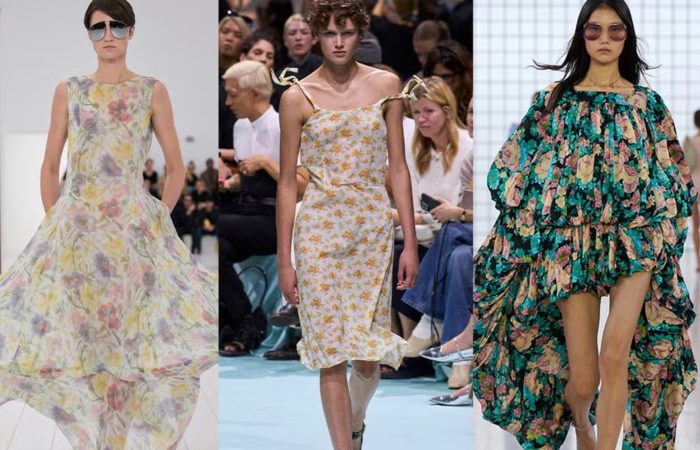project7alpha – Dunia fashion selalu mengalami perubahan dan evolusi setiap tahunnya, dan tahun 2025 tidak terkecuali. Tren fashion dress tahun ini menunjukkan pengaruh global yang kuat dari berbagai budaya di seluruh dunia. Dari desain tradisional hingga inovasi modern, tren fashion dress 2025 menawarkan beragam pilihan yang memukau dan inspiratif.
1. Pengaruh Budaya Asia
Budaya Asia terus menjadi sumber inspirasi utama dalam dunia fashion. Pada tahun 2025, kita dapat melihat pengaruh kuat dari Jepang, Korea, dan India. Kimono Jepang dengan siluet yang elegan dan detail yang rumit menjadi inspirasi bagi banyak desainer. Gaun dengan motif bunga sakura dan warna pastel yang lembut menjadi tren yang populer.
Dari Korea, tren hanbok modern dengan warna-warna cerah dan aksen ruffle menjadi pilihan favorit. Desain ini menggabungkan elemen tradisional dengan sentuhan modern yang chic. Sementara itu, gaun sari dari India dengan bordiran zari yang indah dan warna-warna mencolok juga menjadi sorotan utama.
2. Pengaruh Budaya Eropa
Eropa, khususnya Prancis dan Italia, tetap menjadi pusat inovasi dalam dunia fashion. Paris, sebagai ibu kota fashion dunia, menawarkan tren gaun dengan siluet yang ramping dan elegan. Gaun-gaun dengan detail renda dan aksen pita menjadi pilihan utama bagi banyak wanita.
Italia, di sisi lain, menawarkan desain yang lebih glamor dan mewah. Gaun-gaun dengan bahan satin dan velvet yang mewah serta aksen kristal Swarovski menjadi tren yang tak terelakkan. Warna-warna seperti merah anggur, hitam, dan emas menjadi pilihan utama untuk menciptakan tampilan yang mewah dan elegan.
3. Pengaruh Budaya Afrika
Budaya Afrika juga memberikan pengaruh yang signifikan dalam tren fashion dress 2025. Desain-desain dengan motif tribal server jepang dan warna-warna cerah menjadi pilihan yang menarik. Gaun-gaun dengan kain batik dan kain adire dari Afrika Barat menunjukkan keindahan dan kekayaan budaya Afrika.
Selain itu, gaun-gaun dengan siluet yang longgar dan nyaman juga menjadi tren yang populer. Desain ini tidak hanya menawarkan kenyamanan, tetapi juga menunjukkan keindahan dan keunikan budaya Afrika.
4. Pengaruh Budaya Amerika Latin
Amerika Latin juga memberikan kontribusi yang signifikan dalam tren fashion dress 2025. Desain-desain dengan motif floral dan warna-warna cerah menjadi pilihan yang menarik. Gaun-gaun dengan kain tenun tradisional dari Meksiko dan Peru menunjukkan keindahan dan kekayaan budaya Amerika Latin.
Selain itu, gaun-gaun dengan siluet yang flowy dan aksen ruffle juga menjadi tren yang populer. Desain ini menawarkan tampilan yang feminin dan romantis, sangat cocok untuk berbagai acara formal dan semi-formal.
5. Pengaruh Budaya Timur Tengah
Budaya Timur Tengah juga memberikan pengaruh yang kuat dalam tren fashion dress 2025. Desain-desain dengan motif geometris dan warna-warna emas menjadi pilihan yang mewah dan elegan. Gaun-gaun dengan bordiran yang rumit dan aksen kristal menjadi sorotan utama.
Selain itu, gaun-gaun dengan siluet yang longgar dan nyaman juga menjadi tren yang populer. Desain ini menawarkan kenyamanan dan keindahan, sangat cocok untuk berbagai acara formal dan semi-formal.
Tren fashion dress 2025 menunjukkan pengaruh global yang kuat dari berbagai budaya di seluruh dunia. Dari desain tradisional hingga inovasi modern, tren ini menawarkan beragam pilihan yang memukau dan inspiratif. Dengan berbagai pengaruh dari Asia, Eropa, Afrika, Amerika Latin, dan Timur Tengah, fashion dress tahun ini menawarkan keindahan dan keunikan yang tak terelakkan.





